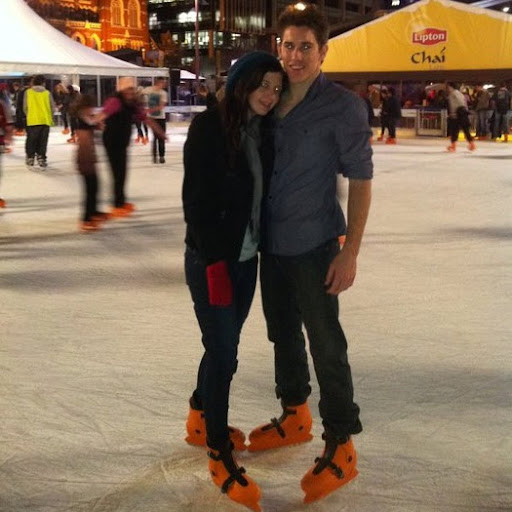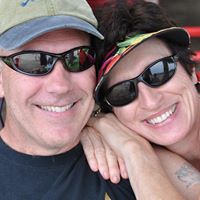Daniel L May
age ~59
from Lewis Center, OH
- Also known as:
-
- Dan L May
- Phone and address:
-
4267 E Bay Cir, Lewis Center, OH 43035
(740)5490123
Daniel May Phones & Addresses
- 4267 E Bay Cir, Lewis Center, OH 43035 • (740)5490123
- Macedon, NY
- Painted Post, NY
- Rochester, NY
- Webster, NY
- Granville, OH
- Delaware, OH
- 99 Birchwood Dr, Rochester, NY 14622
Medicine Doctors

Daniel S. May
view sourceSpecialties:
Pediatrics, Adolescent Medicine
Work:
Pediatric Care Of Chester County
638 Wharton Blvd, Exton, PA 19341
(610)5946440 (phone), (484)2522115 (fax)
638 Wharton Blvd, Exton, PA 19341
(610)5946440 (phone), (484)2522115 (fax)
Education:
Medical School
Virginia Commonwealth University SOM
Graduated: 1990
Virginia Commonwealth University SOM
Graduated: 1990
Procedures:
Circumcision
Destruction of Benign/Premalignant Skin Lesions
Hearing Evaluation
Psychological and Neuropsychological Tests
Vaccine Administration
Destruction of Benign/Premalignant Skin Lesions
Hearing Evaluation
Psychological and Neuropsychological Tests
Vaccine Administration
Conditions:
Acute Bronchitis
Acute Conjunctivitis
Acute Pharyngitis
Acute Sinusitis
Acute Upper Respiratory Tract Infections
Acute Conjunctivitis
Acute Pharyngitis
Acute Sinusitis
Acute Upper Respiratory Tract Infections
Languages:
English
Description:
Dr. May graduated from the Virginia Commonwealth University SOM in 1990. He works in Exton, PA and specializes in Pediatrics and Adolescent Medicine. Dr. May is affiliated with Paoli Hospital and Penn Medicine Chester County Hospital.

Daniel L. May
view sourceSpecialties:
Family Medicine
Work:
Yorba Linda Family Physicians
18300 Yorba Linda Blvd STE 201, Yorba Linda, CA 92886
(714)5776000 (phone), (714)5721679 (fax)
18300 Yorba Linda Blvd STE 201, Yorba Linda, CA 92886
(714)5776000 (phone), (714)5721679 (fax)
Education:
Medical School
University of California, Irvine School of Medicine
Graduated: 1985
University of California, Irvine School of Medicine
Graduated: 1985
Conditions:
Abnormal Vaginal Bleeding
Acne
Acute Bronchitis
Acute Pharyngitis
Acute Sinusitis
Acne
Acute Bronchitis
Acute Pharyngitis
Acute Sinusitis
Languages:
English
Spanish
Spanish
Description:
Dr. May graduated from the University of California, Irvine School of Medicine in 1985. He works in Yorba Linda, CA and specializes in Family Medicine. Dr. May is affiliated with Placentia Linda Hospital.

Daniel Chesley May
view sourceSpecialties:
Pediatrics
Psychiatry
Emergency Medicine
Psychiatry
Emergency Medicine
Education:
University of Minnesota, Twin Cities (1979)
Isbn (Books And Publications)

Joint Ventures: Business Strategies for Accountants
view sourceAuthor
Daniel T. May
ISBN #
0471570184
Us Patents
-
Color Motion Picture Print Films
view source -
US Patent:8357485, Jan 22, 2013
-
Filed:Oct 25, 2010
-
Appl. No.:12/910934
-
Inventors:Christopher J. Haller - Rochester NY, US
Daniel R. May - Brockport NY, US
Paul L. Zengerle - Rochester NY, US -
Assignee:Eastman Kodak Company - Rochester NY
-
International Classification:G03C 1/005
G03C 1/494
G03C 7/46
G03C 1/46
G03C 7/00 -
US Classification:430567, 430934, 430543, 430506, 430503, 430502, 430496, 430377, 430376, 430375, 430374, 430364, 430363, 430357
-
Abstract:A multi-color photographic silver halide element has a total gelatin level on the imaging side of the support is less than 9000 mg/m, and bulk gelatin-to-junk weight ratio for all of the light sensitive layers on the imaging side of the support is greater than 1. 5. This weight ratio is defined by:Bulk gelatin-to-junk ratio=[()+()+()]÷()wherein Bis the total gelatin level for blue light sensitive layers, Bis the gelatin-to-junk ratio for blue light sensitive layers, Ris the total gelatin level for red light sensitive layers, Ris the gelatin-to-junk ratio for red light sensitive layers, Gis the total gelatin level for green light sensitive layers, and Gis the gelatin-to-junk ratio for green light sensitive layers. The imaging layers can be thinned without undesirable loss in sensitometric properties and in increase in dust and dirt generation while providing reduced material costs and improving development properties.
-
Methods For Assembling Depth Image Systems
view source -
US Patent:55327869, Jul 2, 1996
-
Filed:May 24, 1995
-
Appl. No.:8/449149
-
Inventors:Stephen J. Hassall - Churchville NY
Daniel R. May - West Henrietta NY
Martin E. Oehlbeck - Rochester NY -
Assignee:Eastman Kodak Company - Rochester NY
-
International Classification:G03B 2732
G03B 3514 -
US Classification:355 22
-
Abstract:An image sheet (12) is coated with a radiation curable adhesive (48) at a coating station and then laminated to a lenticular array sheet (20) at a laminating station (50). A lamination of the image and array sheets is then positioned on an aligning station (56) where the lenticules of the array sheet are aligned with the image lines (16) of the image sheet. The adhesive is set at a curing station (60).
-
Pattern To Control Spread Of Adhesive During Lamination Of Sheets
view source -
US Patent:59420626, Aug 24, 1999
-
Filed:Jun 26, 1997
-
Appl. No.:8/882794
-
Inventors:Stephen James Hassall - Churchville NY
Daniel Robert May - West Henrietta NY -
Assignee:Eastman Kodak Company - Rochester NY
-
International Classification:B32B 500
G03B 2502 -
US Classification:156 87
-
Abstract:A first sheet (10, 32, 56) is coated by a coater (47) with a pattern comprising a plurality of discrete domains (12, 34) of a low-viscosity adhesive and is then laminated to a second sheet (70) by a paired-roller laminator (62). The viscosity of the adhesive is sufficiently low and the pressure of the laminator sufficiently high that the plurality of adhesive domains (12) are caused to spread during lamination and to displace air from between the sheets, forming thereby a single domain of adhesive which just fills the space between the sheets without adhesive being extruded substantially beyond the edges of the sheets and without air bubbles or voids being entrapped between the sheets. In a preferred pattern, the domains (12) comprise stripes of adhesive with spaces (14) therebetween, the stripes being substantially parallel to the direction of lamination (16). The stripes can be joined by a connecting domain (20) at the leading edge (18) of the first sheet to enhance lamination near that edge, and can be notched or indented (28) at their distal or trailing ends to smooth the adhesive front at the completion of the laminating pass.
-
Multiple Durometer Pressure Roller
view source -
US Patent:58033980, Sep 8, 1998
-
Filed:Mar 8, 1996
-
Appl. No.:8/613274
-
Inventors:Daniel R. May - West Henrietta NY
Kevin A. Cole - Ontario NY
Sharon A. Guzman - Kent NY
Scott W. Tang - Rochester NY -
Assignee:Eastman Kodak Company - Rochester NY
-
International Classification:B65H 1826
B65H 1814 -
US Classification:242547
-
Abstract:A multiple durometer pressure roller for winding a web of deformable material onto a core, particularly for reducing air entrainment in the wound roll. The pressure roller includes a rigid cylindrical shaft, a resilient central sleeve supported by the shaft, and two end sleeves supported at each end of the resilient sleeve. The end sleeves have a lower durometer than the resilient sleeve. In a preferred embodiment, the end sleeves and the resilient sleeve are covered by an outer cover having a higher durometer.
-
Pattern To Control Spread Of Adhesive During Lamination Of Sheets
view source -
US Patent:56861699, Nov 11, 1997
-
Filed:Nov 21, 1994
-
Appl. No.:8/342956
-
Inventors:Stephen James Hassall - Churchville NY
Daniel Robert May - West Henrietta NY -
Assignee:Eastman Kodak Company - Rochester NY
-
International Classification:B32B 714
-
US Classification:428195
-
Abstract:A first sheet (10, 32, 56) is coated by a coater (47) with a pattern comprising a plurality of discrete domains (12, 34) of a low-viscosity adhesive and is then laminated to a second sheet (70) by a paired-roller laminator (62). The viscosity of the adhesive is sufficiently low and the pressure of the laminator sufficiently high that the plurality of adhesive domains (12) are caused to spread during lamination and to displace air from between the sheets, forming thereby a single domain of adhesive which just fills the space between the sheets without adhesive being extruded substantially beyond the edges of the sheets and without air bubbles or voids being entrapped between the sheets. In a preferred pattern, the domains (12) comprise strips of adhesive with spaces (14) therebetween, the stripes being substantially parallel to the direction of lamination (16). The stripes can be joined by a connecting domain (20) at the leading edge (18) of the first sheet to enhance lamination near that edge, and can be notched or indented (28) at their distal or trailing ends to smooth the adhesive front at the completion of the laminating pass.
-
Multiple Durometer Pressure Roller
view source -
US Patent:59674504, Oct 19, 1999
-
Filed:Feb 3, 1998
-
Appl. No.:9/018093
-
Inventors:Daniel R May - West Henrietta NY
Kevin A Cole - Ontario NY
Sharon A Guzman - Kent NY
Scott W Tang - Rochester NY -
Assignee:Eastman Kodak Company - Rochester NY
-
International Classification:B65H 1826
B65H 1814 -
US Classification:242547
-
Abstract:A multiple durometer pressure roller for winding a web of deformable material onto a core, particularly for reducing air entrainment in the wound roll. The pressure roller includes a rigid cylindrical shaft, a resilient central sleeve supported by the shaft, and two end sleeves supported at each end of the resilient sleeve. The end sleeves have a lower durometer than the resilient sleeve. In a preferred embodiment, the end sleeves and the resilient sleeve are covered by an outer cover having a higher durometer.
-
Apparatus And Methods For Assembling Depth Image Systems
view source -
US Patent:54734061, Dec 5, 1995
-
Filed:Jul 21, 1994
-
Appl. No.:8/278436
-
Inventors:Stephen J. Hassall - Churchville NY
Daniel R. May - West Henrietta NY
Martin E. Oehlbeck - Rochester NY -
Assignee:Eastman Kodak Company - Rochester NY
-
International Classification:G03B 2732
G03B 3514 -
US Classification:355 22
-
Abstract:An image sheet (12) is coated with a radiation-curable adhesive (48) at a coating station and then laminated to a lenticular array sheet (20) at a laminating station (50). A lamination of the image and array sheets is then positioned on an aligning station (56) where the lenticules of the array sheet are aligned with the image lines (16) of the image sheet. The adhesive is set at a curing station (60).
License Records
Daniel T May
License #:
5403 - Active
Issued Date:
Oct 17, 1979
Renew Date:
Dec 1, 2015
Expiration Date:
Nov 30, 2017
Type:
Certified Public Accountant
Daniel Joseph May
License #:
E086356 - Active
Category:
Emergency medical services
Issued Date:
Oct 27, 2011
Expiration Date:
Aug 31, 2017
Type:
Glendale City FD
Daniel E May
License #:
061 - Expired
Category:
Asbestos
Issued Date:
May 2, 1989
Effective Date:
May 2, 1989
Expiration Date:
May 2, 1990
Type:
Asbestos Supervisor
Daniel E May
License #:
1601 - Expired
Category:
Asbestos
Issued Date:
Aug 31, 1988
Effective Date:
Aug 31, 1988
Expiration Date:
Aug 30, 1991
Type:
Asbestos Worker
Name / Title
Company / Classification
Phones & Addresses
MAY BROTHERS PROPERTIES LLC
KNOWLEDGE MANAGEMENT INTERACTIVE, INC
MB MILLWORKS LLC
QUALITY FUR PRODUCTIONS LTD
LOWER LEVEL AUTO LLC
Director
Renalserv, LLC
EDUPORT, INC
Lawyers & Attorneys

Daniel E May - Lawyer
view sourceLicenses:
New Jersey - Active 2011
Googleplus

Daniel May
Work:
BNP Paribas - FX SDP Silverlight & WPF Developer (2010)
Sharpcloud - Junior Developer (2010-2010)
Sharpcloud - Junior Developer (2010-2010)
Education:
Strode's College - Computing, Biology, Chemistry, Fullbrook School
Tagline:
C# developer, music fan, jaffa cake demolisher

Daniel May
Lived:
Penfield, NY
Work:
SNI - Driver
Education:
PDI
Tagline:
Writer, etc.

Daniel May
Work:
Science Applications International Corporation
Education:
Mississippi State University

Daniel May
Work:
LADS AUTOMOTIVE - Owner (2013)

Daniel May
Work:
Midwest Air Traffic Control Service Inc - Air Traffic Manager (2007)

Daniel May
Education:
University of Queensland - Bachelor of Mechanical Engineering
Tagline:
9001

Daniel May

Daniel May
Relationship:
In_a_relationship
Plaxo

DANIEL SCOTT MAYS
view sourceNashville, TN, USA

Daniel Desperado May
view source
Daniel May Jr
view source
Daniel May Nicolazzi
view source
Daniel Weedy May
view source
Daniel Louis May
view source
Daniel P. May
view source
Daniel Victor May
view source
Daniel McChristian May
view sourceClassmates

Daniel May
view sourceSchools:
Rebul Academy Learned MS 1995-1999
Community:
Chuck Vance, David Hancock, Chance Walsh

Daniel Hoeye (May)
view sourceSchools:
Bishop Luers High School Ft. Wayne IN 1979-1983
Community:
April Royse, Pamela Bryer

Daniel May
view sourceSchools:
Arnold School of Alabama Mobile AL 1992-1996
Community:
Wright Skipper, Donna Garrett, Alan Edhegard

Daniel May
view sourceSchools:
Kell High School Marietta GA 2003-2007
Community:
Debbie Pierce, Tawn Marshall

Daniel May
view sourceSchools:
Brentwood High School Sandersville GA 1991-1995
Community:
Debra May

Daniel le May
view sourceSchools:
Xavier High School Appleton WI 1958-1962
Community:
Gary Hartzheim, Kenneth Manley, David Dorn

Daniel May
view sourceSchools:
Lake Clifton Eastern High School Baltimore MD 1985-1989

Daniel May (May`)
view sourceSchools:
Watson B. Duncan Middle School Palm Beach Gardens FL 1999-2003
Youtube
Flickr
Get Report for Daniel L May from Lewis Center, OH, age ~59













